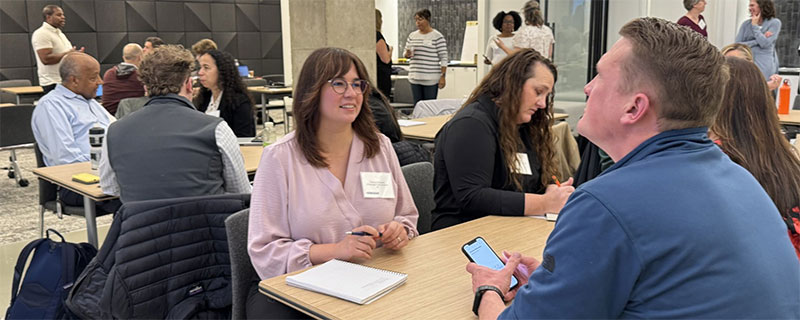U.S.A.: Green Strategies for Healthier, More Sustainable Schools
The Center for Green Schools is dedicated to creating sustainable, healthy, resilient and equitable learning environments. Our mission came to life at the two-day Green Specifications Workshop held in early December, at which we equipped school district leaders with compelling research, industry tools and actionable strategies to prioritize healthy, environmentally friendly construction products.
Healthy materials are a key component to sustainable design, yet many school construction specifications lack clear goals or precise language for avoiding toxins or prioritizing low-carbon materials. This workshop brought together nearly 30 K–12 school district sustainability and capital planning staff members to focus on advancing healthier, more sustainable material choices for school construction and renovation projects.
Key concepts and themes
Industry experts from the design and health research communities guided attendees on where to start and what tools to use, including the LEED v5 Material and Resource credits. School district presenters from Boulder Valley School District, Ann Arbor Public Schools and Sacramento City Unified School District spoke to engaging decision-makers in choosing indoor and outdoor materials that reduce chemical exposure for students, support indoor air quality and are environmentally friendly. Presenters also addressed the balance districts must strike between health attributes, durability and cost.
One session emphasized minimizing greenhouse gas emissions from material production and construction, as well as the value of recycling and repurposing materials through programs such as the TRUE for Construction Projects pilot program. Throughout the event, attendees explored accessible tools for the K–12 audience, such as life-cycle assessments, and learned how to leverage Habitable’s Informed tool to benchmark their efforts and transition from “red” materials to healthier, greener alternatives.
When asked about their favorite part of the workshop, one attendee responded,
“Spotlighting so many different resources, platforms and tools and making me pause and look at our work through the lens of our specifications.”
Interactive learning and practical takeaways
To help attendees translate workshop insights into actionable steps, the event featured a mix of individual and group exercises. Participants explored challenges of selecting healthier materials—such as cost, availability and misconceptions—and brainstormed practical tools and solutions to overcome them. Attendees were able to see a lot of the concepts they learned about in a real project during the tour of District of Columbia Public Schools’ recent renovation of John R. Francis Education Campus.
The event concluded with a peer-coaching exercise, where attendees developed clear action plans to implement healthier materials while addressing potential roadblocks with group support. Some participants stayed for follow-up sessions with presenters and specification experts to refine language that integrates sustainability priorities into project documents, ensuring alignment from concept to completion.
Looking ahead
While every district is at a different starting point on its material health journey, all participants left the workshop with actionable tools and strategies to better align their school building design decisions with health, environmental and community goals. As districts work to implement healthier materials and reduce embodied carbon, this event marks a critical step in creating schools that are safer, greener and healthier for all.
Source: US Green Buiding Council







Leave a Reply
Want to join the discussion?Feel free to contribute!